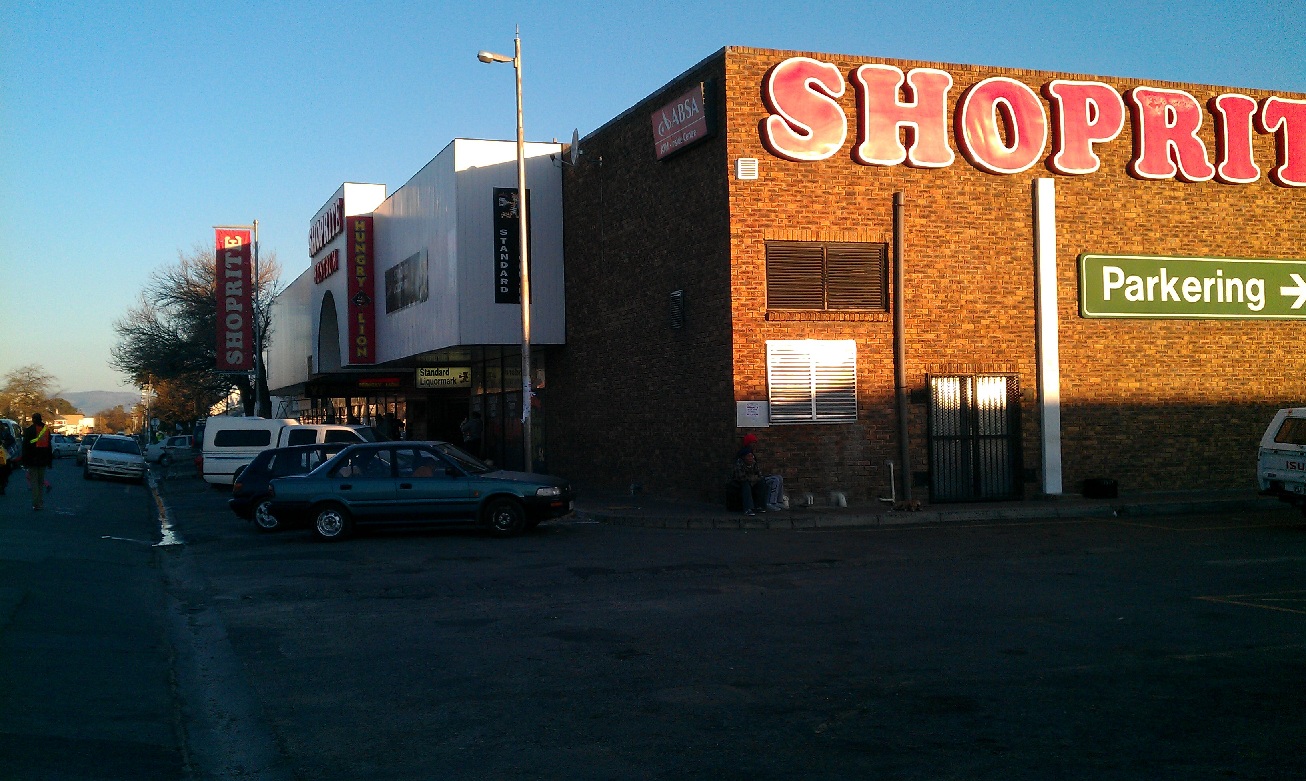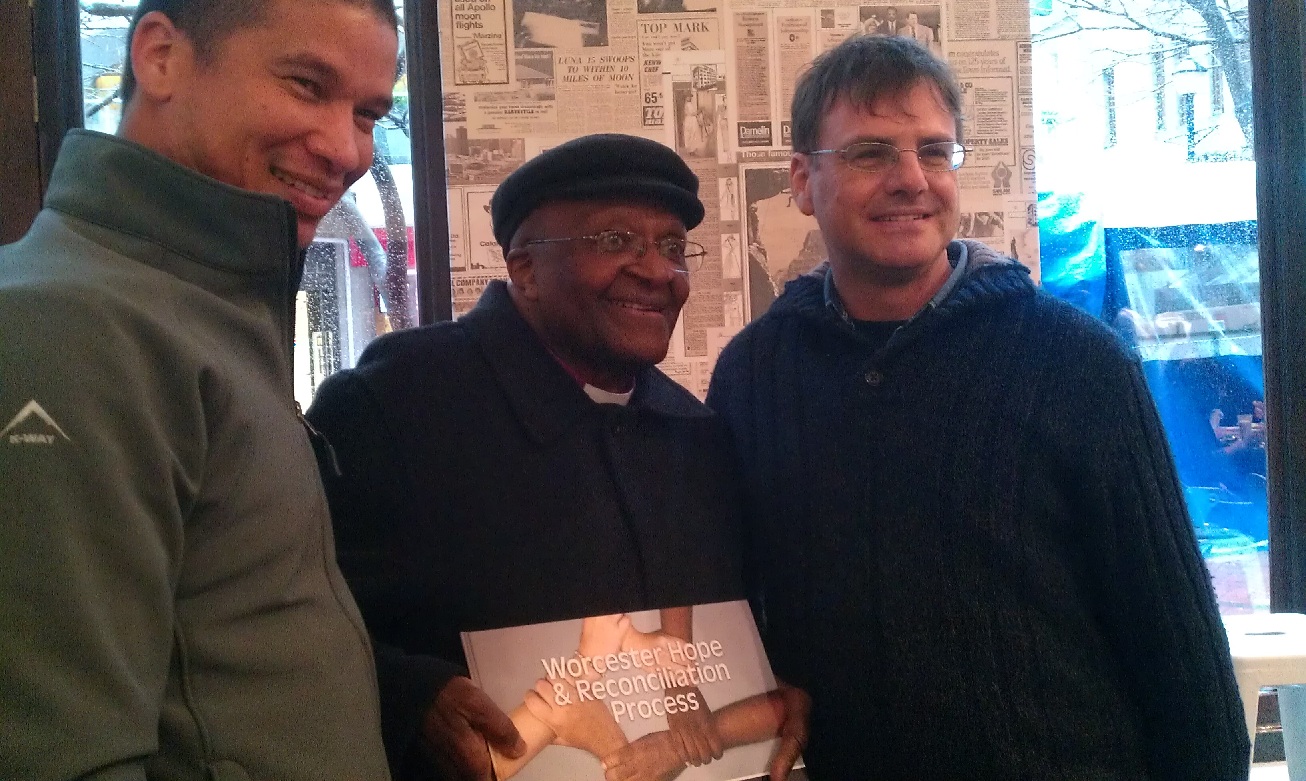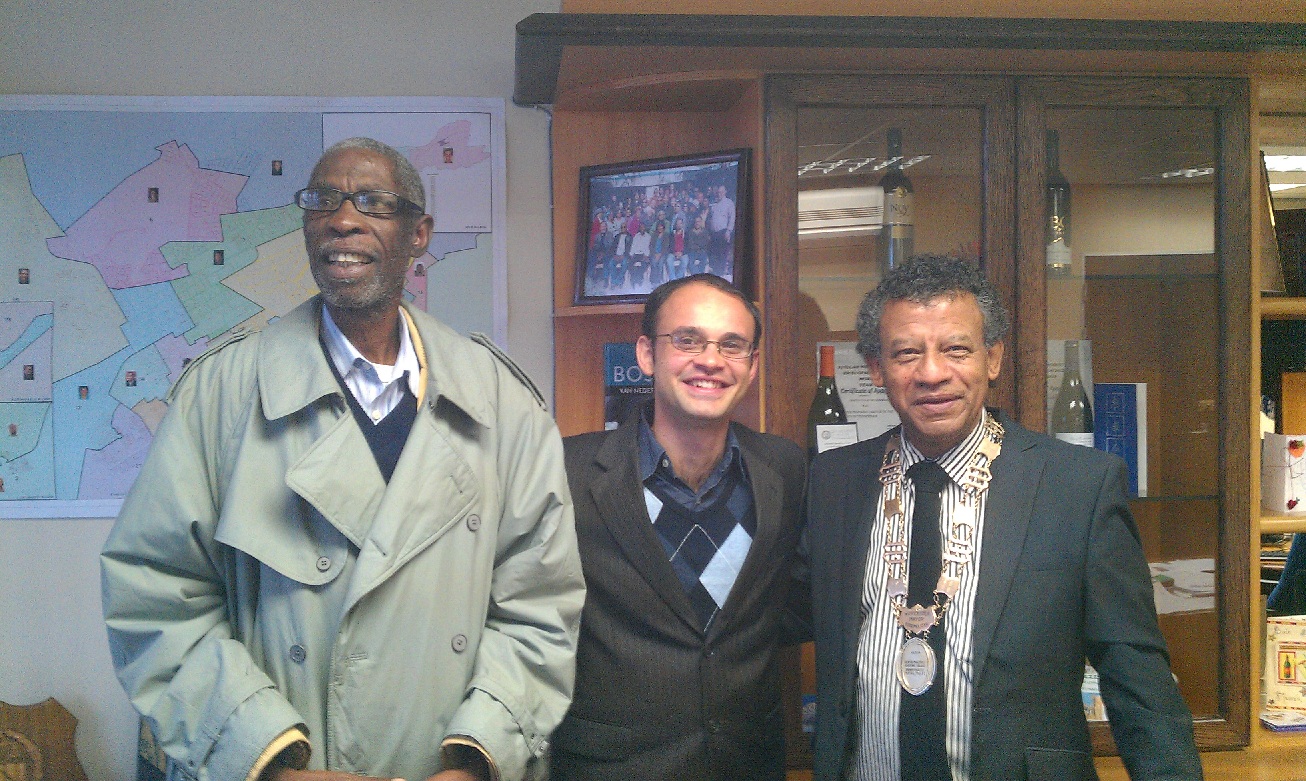A Christmas Nightmare in Post-apartheid South Africa
A Christmas Nightmare in Post-apartheid South Africa
Survivors of the December 1996 bombing in Worcester Seek Justice to Get Peace

It was a normal Christmas Eve in Worcester, a small town in South Africa tucked away between majestic mountains, just an hour drive northeast of Cape Town. Families were busy making their last minute Christmas shopping at Shoprite, the most visited store of the area. For Juanita April, Sydney Jalile, Xolani Matshoba, Andile Matshoba, and Sweetness Busakwe, it would be the last time they shopped there. And the last time they would be alive. In the horrendous aftermath of two bombs that went off, one inside the store and one several minutes later at the Narotam pharmacy across the street, over seventy other people were physically injured, and still many more were forever traumatized.
All victims were either black or colored. Those who placed the bombs were four white supremacists who knew that almost no white person shopped at that busy and low-price location, and wanted to inflict the most race-based damage possible. They planted two other bombs in other public locations for a total of four, but the other two thankfully did not detonate.
As residents of the otherwise calm and quiet town dealt with the ramifications of that disturbing and tragic incident, they asked themselves many questions. First, why did it occur, and why did innocent kids have to die in this politically and racially motivated terrorist act? Were there any warning signs that such a sinister plan was in place? Aside from the four bombers, who should be held responsible? Who should compensate victims for their hospital bills? What is the responsibility of the municipality in such circumstances? What about the national government? Is Shoprite responsible for anything? Is there anything that could have been done to prevent it? What does justice dictate?
The answers are neither easy to deal with, nor necessarily evident. But understanding the context, and what happened in the aftermath, can be a start.
The South African Post-apartheid Setting
The year is 1996, and South Africa is a place undergoing much revolution, still in the process of the Truth and Reconciliation Commission (TRC) headed by Archbishop Desmond Tutu. Nelson Mandela is president, and there is much hope for the new democratic South Africa, but amidst these brims of sunlight coming in through the clouds, there is still anger, there is still pain, and there is still terrible violence. The African National Congress (ANC) has finally won the uncivil war against the race-based and authoritarian apartheid regime, but the peace is usually harder and takes a longer time to secure.
Mandela’s dream, and plan of action, was to strike the right balance between accounting for the racist and violent past, while at the same time allowing all citizens of South Africa—black, colored, Indian, and white—to feel like South Africa is their country. To achieve that balance, the TRC was supposed to allow families of dead victims of political violence to come forward with the testimony of their loss, and encourage the perpetrators to tell the truth of what they did—who they killed, how they killed them, and what they did with the bodies. If the perpetrators told the truth at these TRC hearings, they would receive amnesty—and never be liable for what they did, criminally or otherwise. In return, the victims would get—in theory—closure, knowledge of where the bodies of their loved ones are—so that they can finally give them a proper burial—and R30,000 from a national government fund, the nominal equivalent of about $3,000.
The practice of the TRC process, however, was very different. Perpetrators sometimes made up facts and told fake stories, and still received amnesty. Families of victims only had a two-year window to report the loss of their loved ones, and many failed to do so for multiple different reasons. Many thought their loved one was still in exile in another country, just waiting for the opportune time to return. Some did not know about the time limit, and others in rural areas were even ignorant of the whole process itself. Many could not afford to travel to testify, or to take time off from their work to do so—especially those who lost their family’s main breadwinner. Those who did testify sometimes only got R18,000, while the perpetrators walked away as free men. Some of the freed perpetrators then opened their own private security companies, and actually further profited from their expertise in killing, while victims carried on with their scars and unmet promises of a better future. Today, Khulumani counts over 85,000 such survivors.
Such was the turmoil when December 24th, 1996, came around.
The 1996 Worcester Bombing
Peter John Felix was getting his van ready for his family to go on a vacation on that fateful Christmas Eve, when he received a phone call from his mother.
“Where is Bianca?! Have you heard from Bianca?” she kept asking him, hysterically.
“Bianca is not with me…why?” he answered, trying to calm her down. Peter’s daughter, Bianca, had gone to Shoprite with her aunts earlier that day.
“Peter, there was a bombing at Shoprite,” she said. The distressed father immediately hung up, and drove straight to the store.
The scene he witnessed there was complete chaos. The police had already blocked off the store, but nothing was going to stop him from finding his daughter. He ran inside the store, slipped, and found himself on the floor. When he looked around, he realized the floor was covered in human body parts, which is what had caused him to slip.
Eva Baartman Neethling also remembers the day very well. She was working as a cashier at Shoprite, and had been working there for four years when the bombing occurred. Her contract, like many at the time and still today, was as a “flexi” employee—meaning that she did not get the benefits of full time employees, even though she worked over 40 hours a week. Some minutes before the blast, she smelled a strong odor of ammonia emanating from one of the garbage bins in the store. The smell was getting stronger and stronger. Some workers reported it to their supervisors, but were asked to just return to their posts to cater to the lines of shoppers. Customers themselves were hurrying to get all their groceries and exit the store to escape the stench.
Then the blast happened, from that same garbage bin. Eva was paralyzed with fear. Just three days before, there had been an attempted robbery at the same store. Shoprite closed the store for just two hours, when armed policemen arrested the robbers and inspected the store, and management then demanded employees reopen the store. When Eva stated that she was too scared to return to her cashier post for that day, Shoprite management threatened that she would lose her job if she didn’t. So she returned to work, wiping off tears the rest of the afternoon while she totaled grocery bills. She was still in shock and facing the trauma of that day when the even more devastating tragedy occurred just three days later.
The Aftermath
Bianca was badly injured in the blast, and was taken to the hospital—first, to the public Eben Donges hospital, and then to the private Mediclinic. She would be in her hospital bed for five months. Peter had watched President Mandela on television on Christmas in 1996—the next day after the bombing—say that money from the President’s Fund that was supposed to go to the Social Services fund would instead be used to create a fund for the victims of the Worcester bombing. Some survivors remember hearing that the fund had about four million rands, while some say the amount was actually 44 million rands.
In the following weeks, Peter called the president’s office, the national treasurer’s office, and the minister of justice’s office multiple times to inquire about the fund for Worcester victims. He also went to the national government information desk in Cape Town, where he was treated to a nice lunch, but ultimately had to return to Worcester empty-handed.
He received repeated assurances that the money was in place, and that someone would get back to him about how to access it. Seventeen years have since passed, however, and no one ever did. Peter sold his house to pay his daughter’s hospital bills, and then sold two cars. His wife divorced him, not being able to cope with the pain and rift that the incident had caused in the family.
Shoprite has refunded some shoppers for their grocery bill from that day. Esther Tani Nomazwi received a teddy bear. Fatima Omardien, who was a full-time check-out comptroller at the time, received a bouquet of flowers, along with a note from Whitey Basson, the CEO, expressing best wishes for recovery. Lydia Busakwe received a Shoprite gift of sugar and tea for the funeral of her daughter Sweetness Busakwe, who was working at the store at the time.
Management closed the store for the two holidays that followed the bombing, and reopened on December 27th. There never was any management debriefing of the incident with employees, no attempt at offering any counseling sessions, and not even a mention of the incident—management was only concerned with making up for lost business from the 24th. To my knowledge, Shoprite never paid any medical expenses for any customer, any full-time employee, and certainly nothing to any flexi employee. One victim who went to Shoprite’s headquarters in Cape Town was turned away, with the explanation that Shoprite management were not the ones who planted the bomb in the store.
The four bombers—Nicolaas Barnard, Abraham Myburgh, Johannes van der Westhuizen, and Stefaans Coetzee—were arrested shortly after the bombing and are still serving time in prison. Stefaans was seventeen years old at the time, a member of the white supremacist group Afrikaner Weerstandsbeweging, against the new government, and had a deep hatred of black people. Prison has since changed him, and introduced him to a non-racist way of looking at the world, which he has now embraced. But he lives every day with the reality of what he did, and he has asked the survivors and victims for forgiveness.
Worcester Hope and Reconciliation Process
This past February, in what is now known as the Peace Train, about fifty survivors from Worcester traveled to the prison in Pretoria by train to meet Stefaans. Linda Sibeko, who was deputy mayor of Worcester at the time of the bombing, remembers the trip very well. The national Department of Correctional Services paid for the travelers to come to Pretoria by business class, and the train ride was one of the best and most comfortable she’s ever taken.

Once in Pretoria, the survivors heard Stefaans’ apologies and explanations of how he and his friends planned the bombing, and some survivors found the strength to forgive him. Hugs and tears followed. Olga Macingwane, who had vowed to never forgive when she embarked on the train from Worcester, managed to do exactly that.
Deon Snyman, from the Restitution Foundation, has made the process of hope and reconciliation in Worcester one of his main works. He is also keen on fighting for restitution, so that survivors can be made as whole again as is possible. He asked the community in Zwelethemba (the black township of Worcester), Johnsons Park (the colored area of Worcester), and the rest of Worcester to appoint a total of twenty key community members who would participate in and lead efforts of reconciliation. Some of the participants include Harris Sibeko, Nobanzi Ndamoyi, Guido Opperman, Frank van Zil, and Jan Ungerer.

On Madiba Day, to celebrate Mandela’s 95th birthday, many of them traveled to Cape Town to attend the launch of a coffee table book to commemorate some of the milestones of the reconciliation process. The next day, on July 19th, 2013, Guido Opperman and Deon Snyman offered a copy of the book to Archbishop Desmond Tutu (above).
A Foreigner in Worcester

I was a foreigner welcomed and embraced by the Worcester community. I stayed in Zwelethemba, at the home of Nobanzi Ndamoyi, and gathered the testimony of many of the survivors. Harris Sibeko and I walked the streets of Zwelethemba, and had a meeting with the caring mayor of Worcester, Basil Kivedu (above). Counselor Frank van Zyl, Linda Sibeko, and Wahida Parker all offered their time and wisdom. Pastor Fannie welcomed me in his home for a “Koinonia” dinner with some of the other diverse participants of the Worcester Hope and Reconciliation Process, including Guido and Harris.
A couple days ago, Stefaans was transferred from the Pretoria prison to another prison in Worcester. Mayor Kivedu sees Stefaans’ apology and return to Worcester as symbolic of the reconciliation process, which it certainly is.
Remaining Work of the Reconciliation Process
Now is an opportune time to make amends for the Christmas nightmare of 1996. As a foreigner, I am not the one who can say what remains to be done, for I am not the one who will be able to do the work that remains. But in the spirit of honoring my commitment to the survivors of the Worcester bombing, whose horrifying testimonies I gathered—and in the process made them relive those horrors they had sought to forget—I cannot end this piece without offering some conclusion of what four of the key stakeholders still need to do.
First, the national government needs to officially address the issue of the promised and missing funds for the victims. Even if the news is not positive, at least it would bring closure to the painful chapter of unanswered queries, especially for Peter, who lost so much. But someone from the national government needs to claim responsibility for that past, and will receive the gratitude of the Worcester community in return.
Shoprite also needs to issue some form of apology for how they mistreated employees in the aftermath of the bombing, and ideally back that apology with a considerable donation to either employees at the time, or to the efforts of the Worcester Hope and Reconciliation Process—or to both. If it is true that someone in Shoprite’s management earns 40 million rands per year in salary, then surely the company can afford to do so. Many employees from 1996 are still working today at that same store, and have to face their unresolved trauma every single work day.
The four bombers are in jail, and Stefaans has apologized. As optimistic, symbolic, and heartfelt as that apology was, however, it cannot be all. I am hopeful that Stefaans will become a spokesperson for reconciliation, and will help in efforts to heal those he hurt—both emotionally and financially. The other three bombers can either follow Stefaans’ lead, and heal themselves in the process, or remain alone to face their demons.
Finally, the Worcester citizens and municipality still have much work to do. The Hope and Reconciliation Process needs to continue, and needs to be amplified. Koinonia meals between diverse members of Worcester need to multiply, and participants must continue to understand and befriend each other across the racial divide.
Slowly but surely, as Dr. King and Theodore Parker said, the road bends towards justice. For victims of the 1996 Worcester bombing, who have already waited seventeen years, the sooner the better.